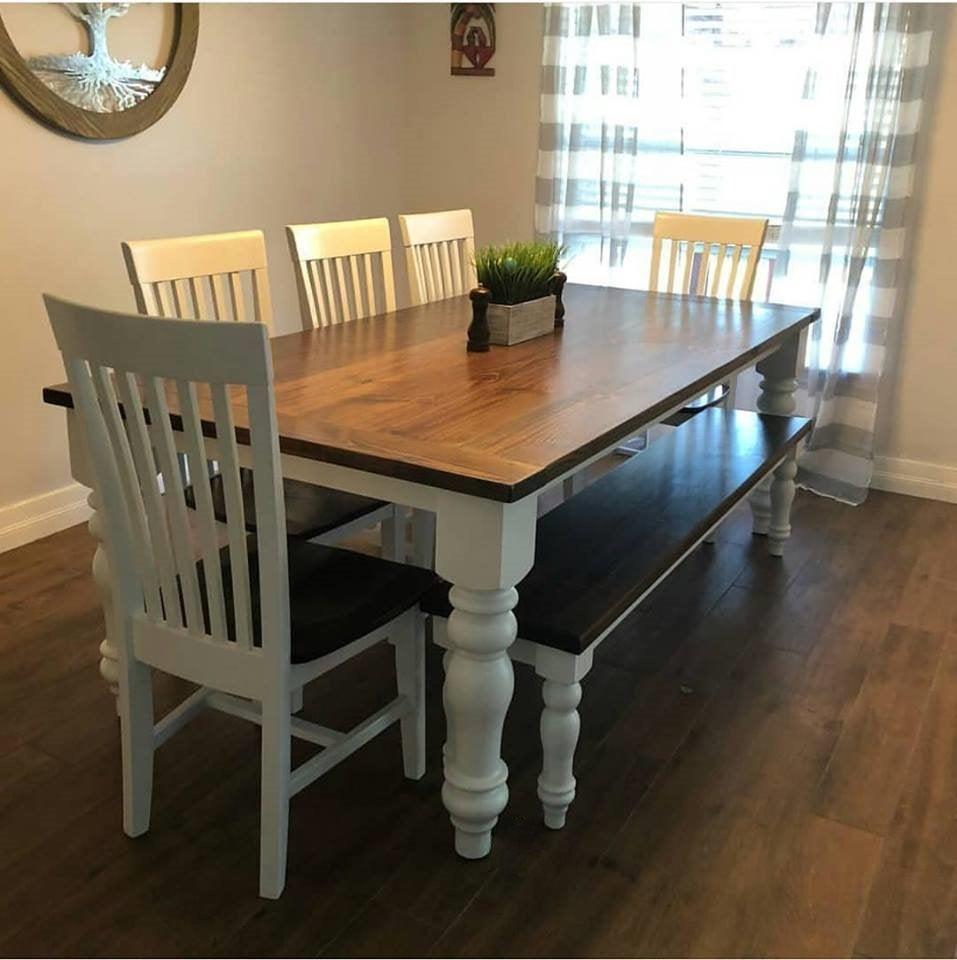One-of-a-kind Dining Room Table Legs to Transform Your Dining Location
One-of-a-kind Dining Room Table Legs to Transform Your Dining Location
Blog Article
A Thorough Appearance at Eating Table Leg Styles: Discovering the Ideal Suit
Choosing the best table leg design is important for both visual appeal and practical capability. Conventional four legs supply classic elegance and stability, while the pedestal base offers boosted legroom and a modern-day look. For those with larger tables, trestle legs guarantee durable assistance, whereas barrette legs present a mid-century modern-day vibe with their minimalist layout. The x-shaped legs blend contemporary design with enhanced security. Each of these choices brings special benefits, making the option more than just an issue of choice. Explore even more to find which design flawlessly complements your dining room and way of living.
Conventional Four Legs
Amongst the numerous kinds of dining table leg styles, the typical four-leg style continues to be a classic selection for numerous houses. Four legs provide balanced support, guaranteeing the table stays secure and qualified of bearing considerable weight (dining room table legs).
From an aesthetic perspective, the typical four-leg design can be conveniently adjusted to different indoor designs. Whether crafted from timber, metal, or a mix of materials, these legs can be intricately sculpted, sleek and minimalistic, or anything in between. Their convenience permits them to match both rustic and modern settings seamlessly.
In addition, the straightforward framework of the four-leg design helps with convenience of motion and placement within a space. Unlike even more complicated bases, this style lessens obstructions, offering ample legroom for restaurants. In recap, the traditional four-leg table leg design marries enduring beauty with sensible capability, making it an astute selection for those looking for both kind and function in their eating furniture.
Pedestal Base
Typically celebrated for its sophisticated and space-efficient design, the pedestal base is a distinguished alternative to the standard four-leg setup in table leg styles. This distinctive base normally features a solitary main column sustaining the table top, which can differ in kind, from ornately sculpted timber to smooth, modern-day steel. Among the main benefits of the stand base is its ability to make best use of legroom and seating flexibility. Without corner legs, diners are paid for better liberty of motion, making it an optimal option for round and oval tables that promote more intimate and inclusive celebrations.
Furthermore, the pedestal base's central support can deal with considerable weight, enabling using larger table tops, such as marble or thick wood. This toughness coupled with its aesthetic versatility makes the pedestal base a popular choice in both traditional and contemporary indoor setups. It can flawlessly incorporate with numerous layout styles, from traditional sophistication to minimalist modernity. Additionally, the central column itself provides a canvas for intricate designs and imaginative expressions, including an aspect of visual interest beneath the table. In recap, the stand base integrates functionality with design, making it an improved and functional option for varied eating environments.
Trestle Legs
Trestle legs provide a durable and timeless structure for dining tables, identified by their horizontal cross-bracing and tough support light beams. Originating from middle ages times, this design has actually developed yet preserved its essential framework, making it a seasonal fave in both conventional and modern setups. The main trestle beam, usually supported by 2 or more upright posts, uses remarkable security, allowing for bigger table sizes without the need for extra legs.
A significant advantage of trestle leg tables is the enough legroom they offer. Unlike tables with four edge legs, the lack of obstructions at the table's edges his comment is here gives unimpeded area for chairs and restaurants, enhancing comfort and availability. This makes trestle tables ideal for fitting bigger celebrations, whether in a dining room or a banquet hall.
The visual versatility of trestle legs is noteworthy. Offered in a selection of products such as timber, metal, and composite, they can be finished to match a wide variety of indoor designs. From rustic farmhouse to sleek modern styles, trestle legs can be personalized to fit specific preferences. Their long-lasting allure and useful advantages make trestle legs a compelling choice for those seeking both style and functionality in their eating table.
Hairpin Legs

The allure of barrette legs lies in their simpleness and versatility - dining room table legs. Available in a series of products, including steel and brass, they can be completed in countless colors to enhance different interior designs. Whether coupled with a rustic wooden tabletop or a contemporary glass surface area, barrette legs effortlessly blend performance with a touch of classic charm
Sturdiness is an additional remarkable attribute of hairpin legs. Despite their delicate appearance, these legs are crafted to birth significant weight, ensuring the dining table stays secure and safe and secure. Additionally, they are relatively easy to install, making them a prominent option for do it yourself fanatics and specialist furnishings manufacturers alike.
X-Shaped Legs

Constructed from materials such as steel, timber, or a combination of both, X-shaped legs can be tailored to match different layout choices. Steel legs usually lend a streamlined and industrial feel, perfect for loft-style apartments and contemporary eating spaces. On the various other hand, wooden X-shaped legs use a warmer, more rustic charm, appropriate for farmhouse or diverse insides. The flexibility in products enables house owners to customize their dining tables to better fit their total layout scheme.
Furthermore, the engineering behind X-shaped legs makes sure also weight circulation, lessening the threat of tottering and boosting resilience. This makes them specifically fit for bigger table that call for added assistance. Basically, X-shaped legs mix sensible design with modern-day aesthetics, making them a timeless choice for diverse eating settings.
Verdict
A detailed understanding of dining table leg designs exposes the distinct features and advantages of each design. Trestle legs make certain robust support for bigger tables, and hairpin legs present a mid-century contemporary visual.
Report this page